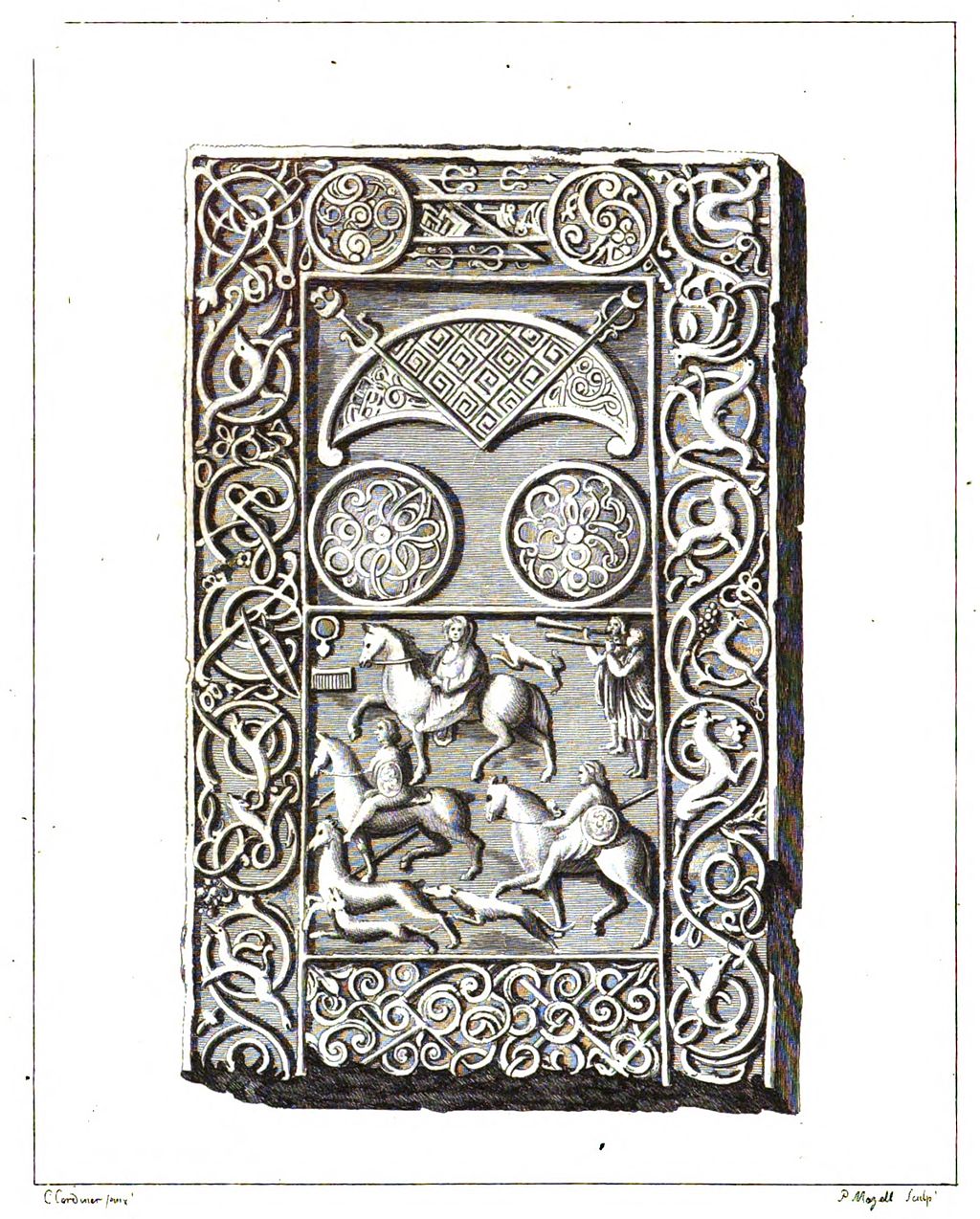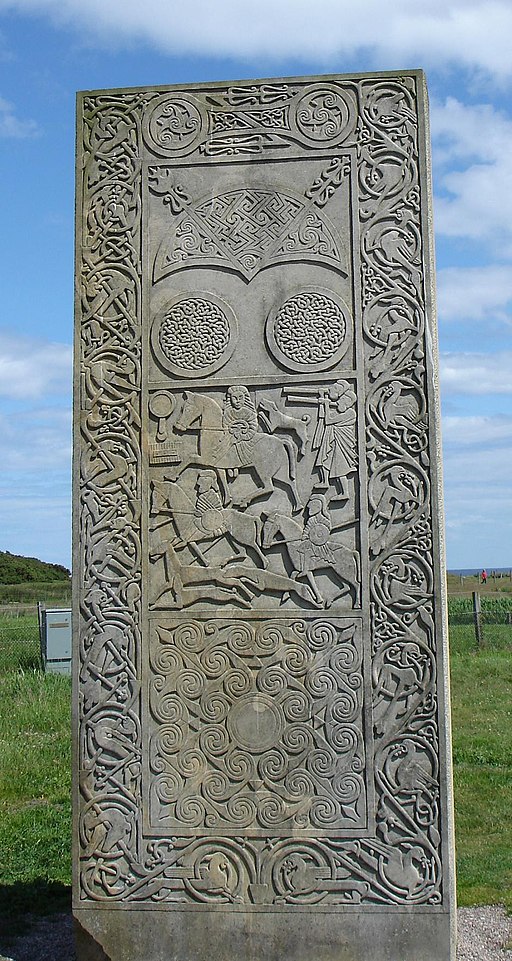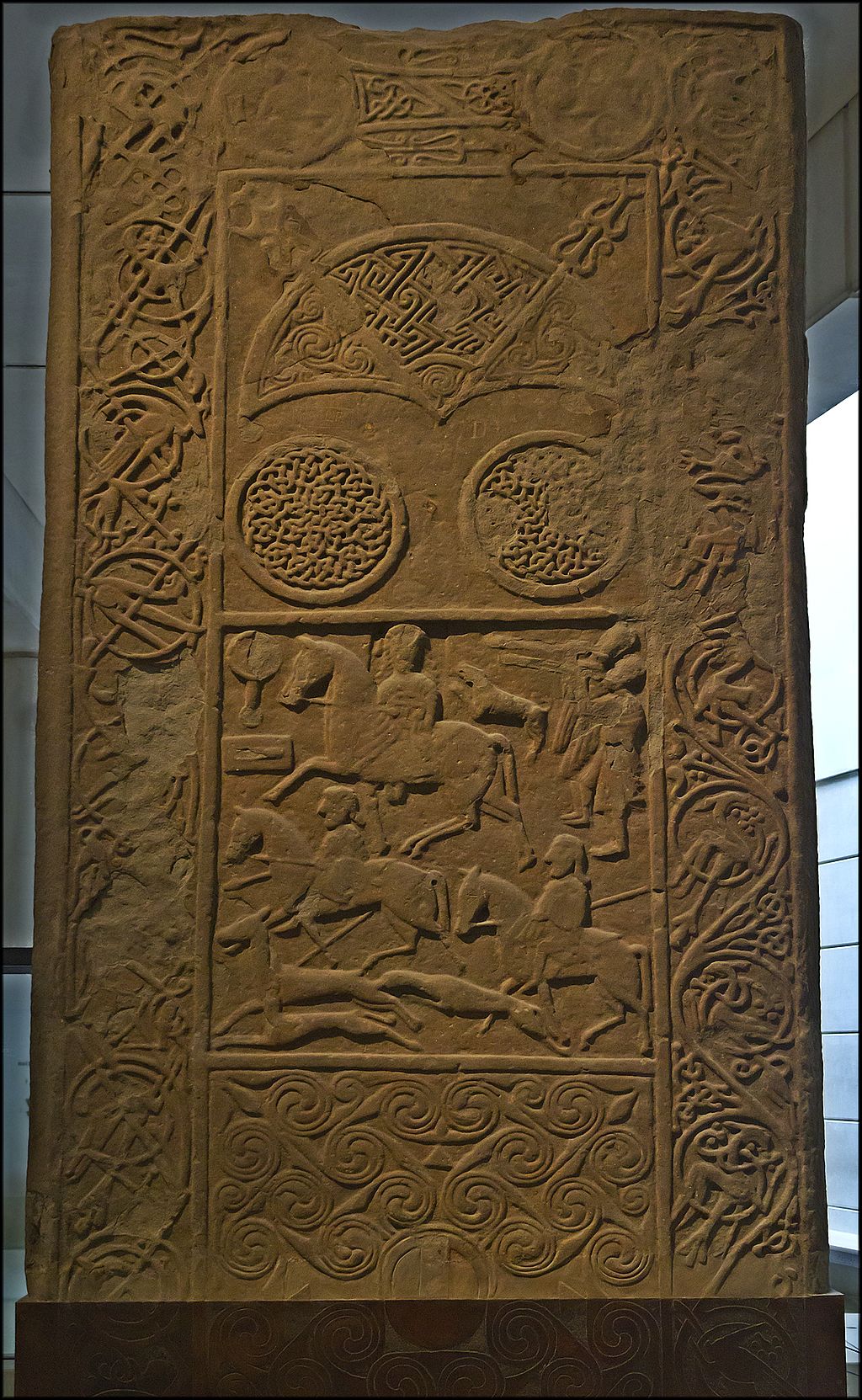
The Hilton of Cadboll Stone is a monumental stele carved with symbols and designs discovered at Hilton of Cadboll, a village on the East coast of Scotland. It is a magnificent example of a Pictish cross-slabs and dates to about 800 AD.
The Picts were a tribal confederation of people who lived in today’s eastern and northern Scotland during the Late Iron Age and Early Medieval periods.
The Picts were ethnolinguistically Celtic, and this Pictish stones helps shed light on their culture. The stone was formerly near a chapel just north of the village.
On the seaward-facing side is a Christian cross. At this time, Scotland was becoming Christian and sculptured stones like this one were created to celebrate the new religion.
On the landward facing side of the stone are secular depictions. Carved below the Pictish symbols is a hunting scene that includes a woman wearing a large brooch riding side-saddle. Carved from local sandstone, it displays sophisticated artistry and symbolism.
Engraving of Hilton of Cadboll Stone made in 1788
A modern reconstruction of the Hilton of Cadboll Stone can be seen near where the original stone was found at the edge of the village of Hilton of Cadboll, in Ross and Cromarty.
Picts
The Picts were a confederation of Celtic language speaking peoples who lived to the north of the rivers Forth and Clyde. Early medieval sources report a distinct Pictish language, which today is believed to have been an Insular Celtic language.
Picts are assumed to have been the descendants of the Caledonii and other Iron Age tribes mentioned by Roman historians and on the world map of Ptolemy.
Pictish society was typical of many Iron Age societies in northern Europe, having connections and parallels with neighboring groups.
While very little in the way of Pictish writing has survived, Pictish history since the late 6th century is known from a variety of ancient sources and various Irish annals.

Hilton of Cadboll Stone replica, Highland, Scotland
Pictish Art
Pictish art appears on stones, metalwork, and small objects of stone and bone. It uses a distinctive form of the general Celtic Early Medieval styles with increasing influences from the Insular art of 7th and 8th century Ireland and Northumbria.
Then later in Anglo-Saxon and Irish Art during the Early Medieval period. The most remarkable survivals are the many Pictish stones that are located all over Pictland.
These stones’ symbols and patterns consist of animals, including the Pictish Beast, among many others. There are also bosses and lenses with pelta and spiral designs.
The patterns are curvilinear with hatchings. The cross-slabs are carved with Pictish symbols, Insular-derived interlace, and Christian imagery, though interpretation is often difficult due to wear and obscurity.
The Insular manuscript tradition has influenced many of the Christian images carved on various stones.
In the 8th and 9th centuries, after Christianization, the Pictish elite adopted a particular form of Celtic Art, and the 8th century Monymusk Reliquary has elements of Pictish and Irish style.
Hilton of Cadboll Stone replica, landward facing side
Insular Art
Insular art, also known as Hiberno-Saxon art, is the art style produced in the post-Roman history of Ireland and Britain. The term derives from insula, the Latin term for “island.”
Most Insular art originates from the Irish monastic movement of Celtic Christianity, or metalwork for the secular elite. The period begins around 600 with the combining of Celtic and Anglo-Saxon styles.
The major distinctive feature is interlace decoration, which was applied to decorating new objects mostly copied from the Mediterranean world, above all the codex or books.
This exceptional period of the style was brought to an end by the disruption to monastic centers and aristocratic life of the Viking raids, which began in the late 8th century.
In England, the style merged into Anglo-Saxon art around 900, while in Ireland, the form continued until the 12th century, when it merged into Romanesque Art. Ireland, Scotland, and the kingdom of Northumbria in northern England are the most important centers.
The influence of insular art affected all subsequent European medieval art, especially in the decorative elements of Romanesque and Gothic manuscripts.
Hilton of Cadboll Stone
- Title: Hilton of Cadboll Stone
- Year: c.800 AD
- Place Created: Northern Scotland, then a heartland of the Picts.
- Material: Sandstone
- Dimensions Height 2.34m, length 0.18m, width 1.44m
- Weight: 1.9 tonnes
- Museum: National Museum of Scotland
Hilton Of Cadboll Stone, Near Dornoch, Scotland
Explore the National Museum of Scotland
- Monymusk Reliquary
- Hilton of Cadboll Stone
- Lewis Chessmen
- National Museum of Scotland
Hilton of Cadboll Pictish Stone Scotland
Explore the Scottish National Gallery
- “Vision after the Sermon” by Paul Gauguin
- “Haystacks” by Claude Monet
- “Saint Bride” by John Duncan
- “Drinkers in the Bower” by Pieter de Hooch
- “Portrait of Lady Agnew of Lochnaw” by John Singer Sargent
- “The Finding of Moses” by Giovanni Battista Tiepolo
- “Three Tahitians” by Paul Gauguin
- “Diana and Callisto” by Titian
Cadboll Stone
- “Montagne Sainte-Victoire” by Paul Cézanne
- “Francesca da Rimini” by William Dyce
- “Master of the Universe” by Eduardo Paolozzi
- “The Reverend Robert Walker Skating on Duddingston Loch” by Henry Raeburn
- “Sir Winston Churchill, 1874 – 1965. Statesman” by James Guthrie
- “David Lloyd George, 1st Earl Lloyd-George of Dwyfor, 1863 – 1945. Statesman” by James Guthrie
- “Sri Ganga Singh Bahadur, the Maharaja of Bikaner, 1880 – 1943. Statesman” by James Guthrie
- “Arthur James Balfour, 1st Earl of Balfour” by James Guthrie
- “William Morris Hughes, 1862 – 1952. Prime Minister of Australia” by James Guthrie
Cult and Kingship – Understanding the Early Pictish Royal Centre
Tour of the Museums in the United Kingdom
- London Museums
- Edinburgh Museums
- Glasgow Museums
- Liverpool Museums
- Manchester Museums
- Bath Museums
- Birmingham Museums
- Leeds Museums
The Northern Picts: latest finds
~~~
“A good tale never tires in the telling.”
– Scottish Proverbs
~~~
Photo Credit: 1) By dun_deagh (Pictish Carved Stone) [CC BY-SA 2.0 (creativecommons.org/licenses/by-sa/2.0)], via Wikimedia Commons 2) By painted by Charles Cordiner, engraved by Peter Mazell [Public domain or Public domain], via Wikimedia Commons; 3) Otter [CC BY-SA 3.0 (reativecommons.org/licenses/by-sa/3.0)] 4)The original uploader was Deacon of Pndapetzim at English Wikipedia. [CC BY-SA 2.5 (https://creativecommons.org/licenses/by-sa/2.5)]
Popular this Week



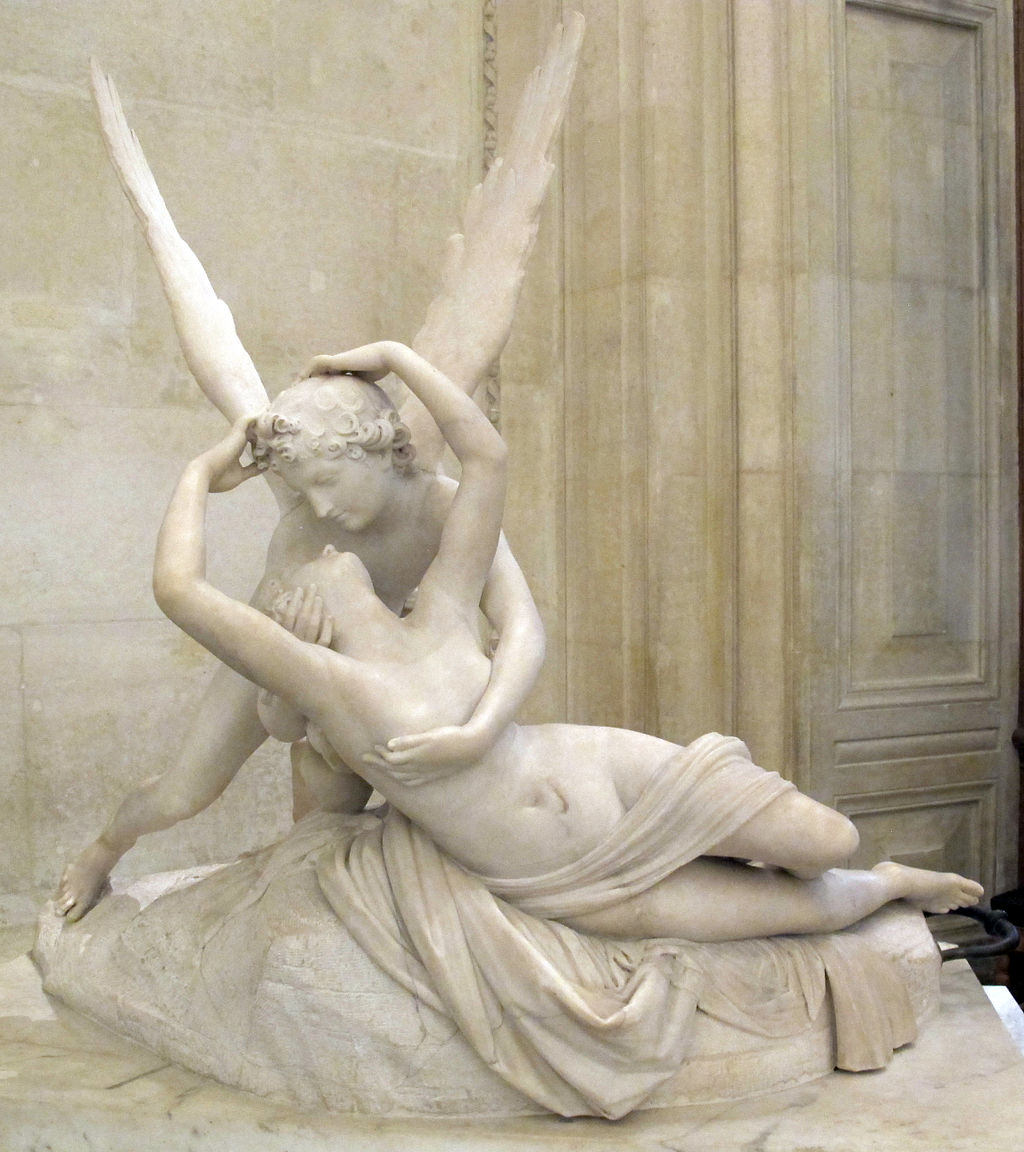



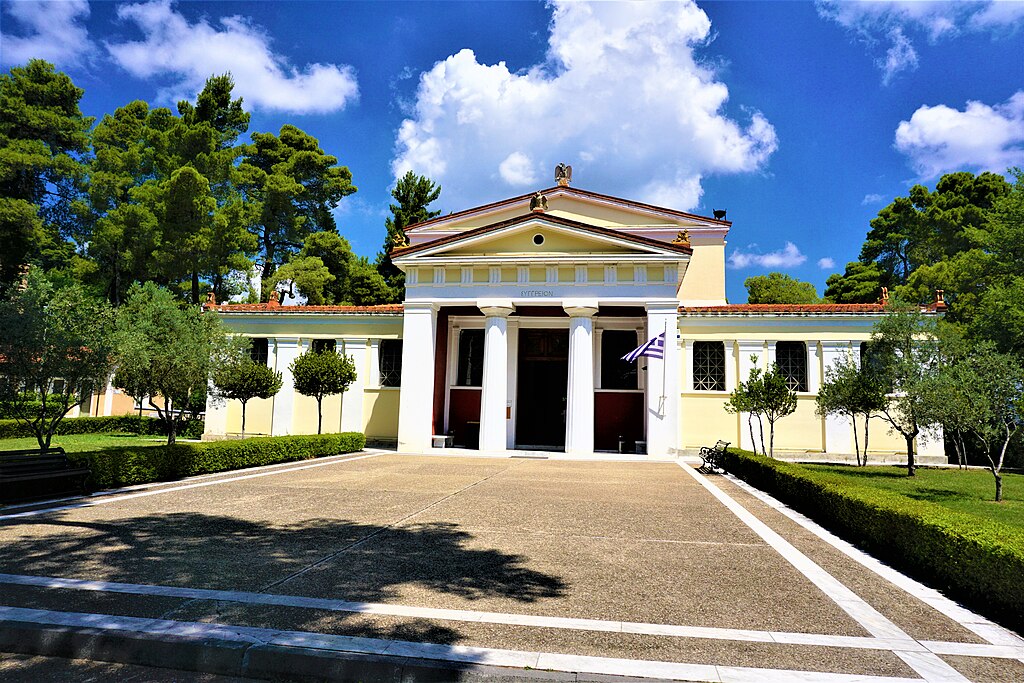
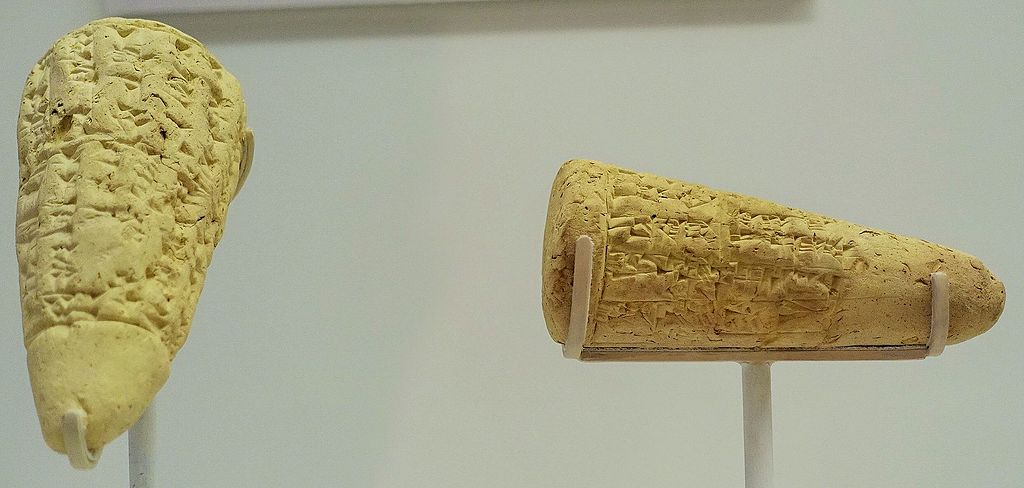 Sponsor your Favorite Page
Sponsor your Favorite Page SEARCH Search for: Search Follow UsJoin – The JOM Membership Program
Sponsor a Masterpiece with YOUR NAME CHOICE for $5
Share this:
- Tweet

